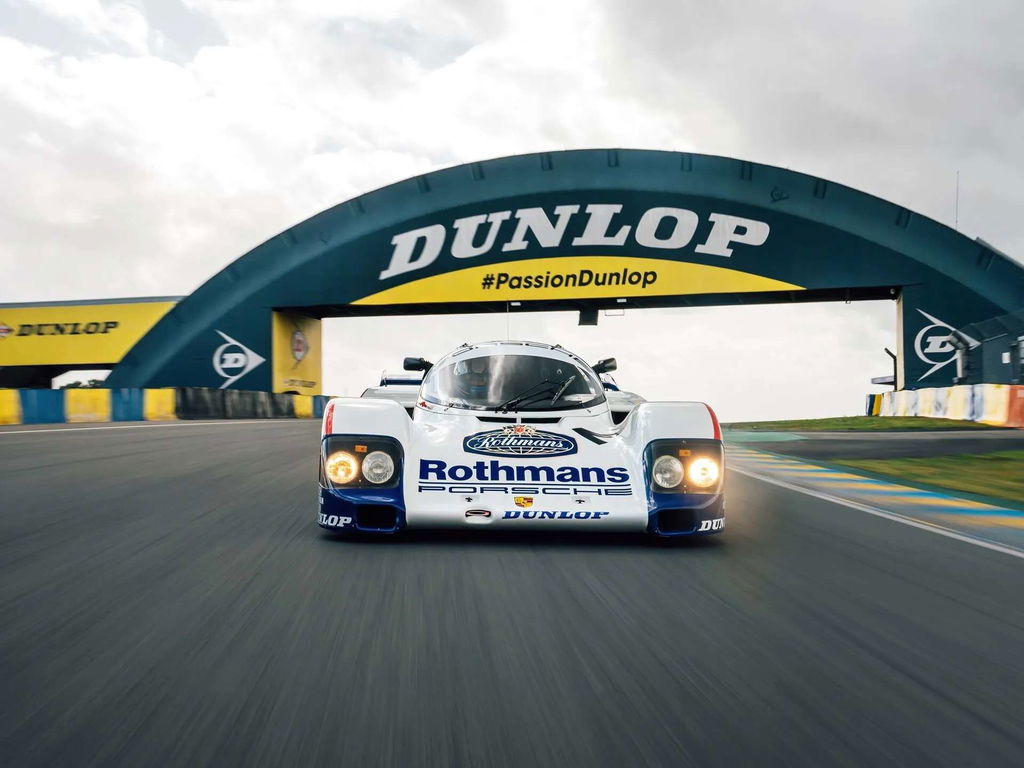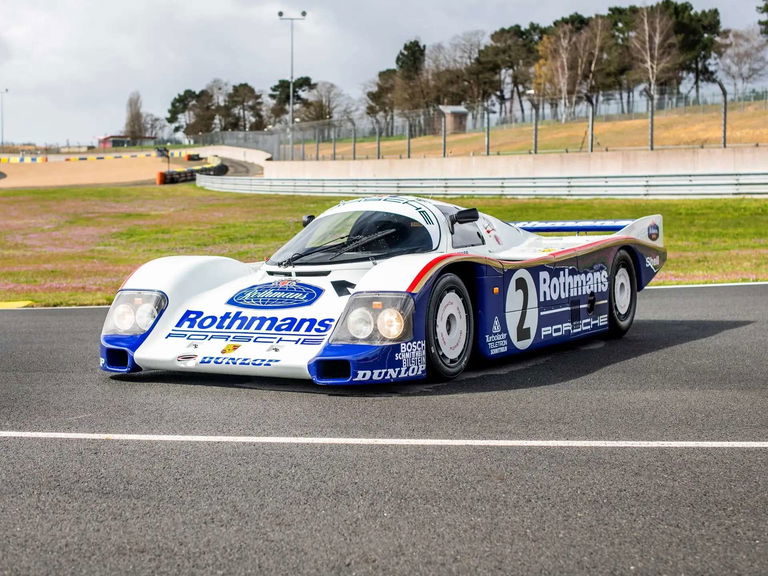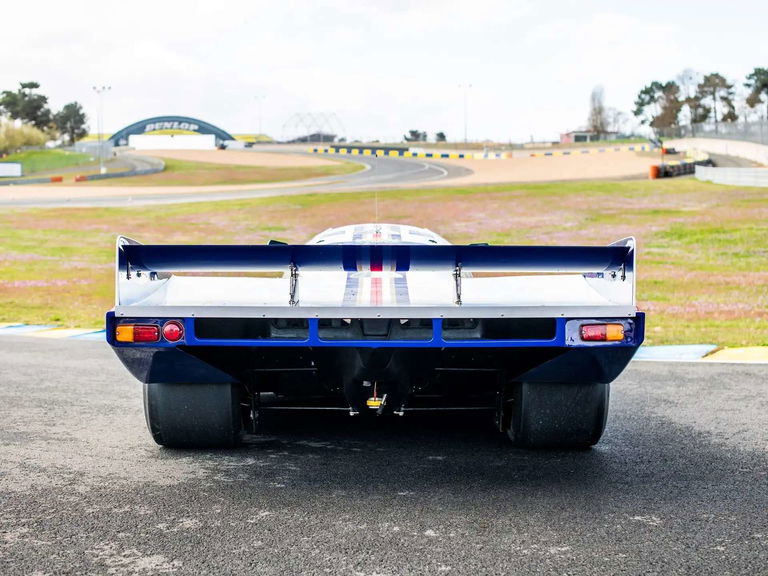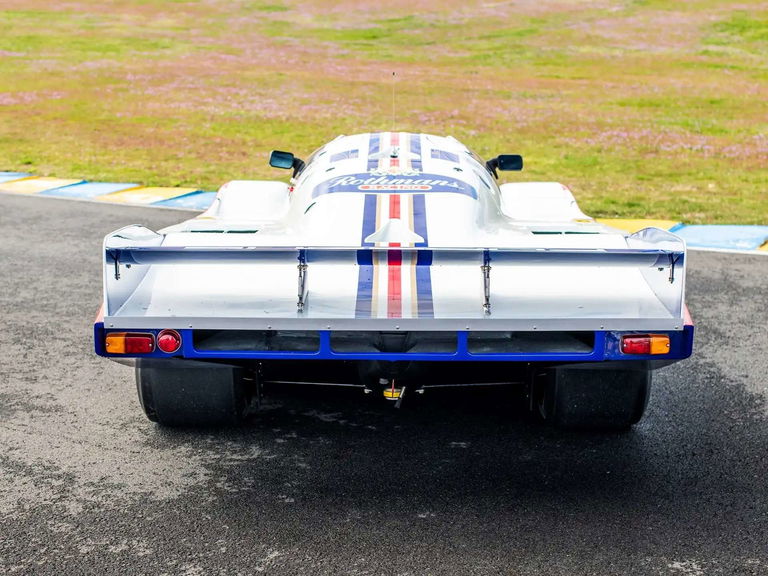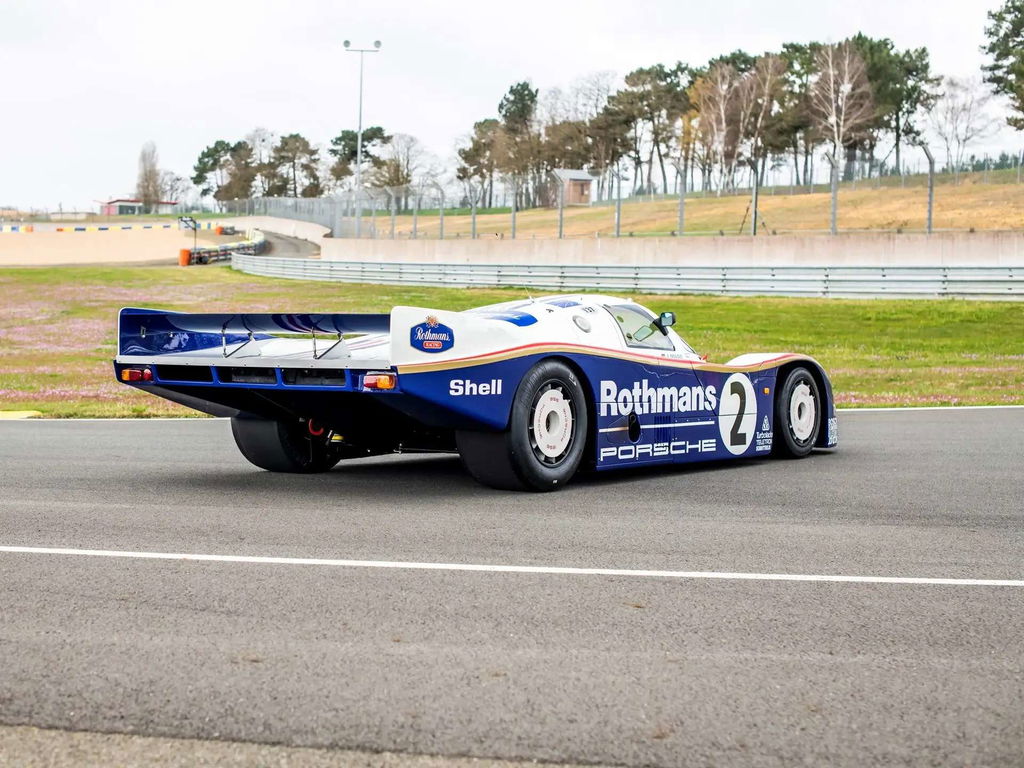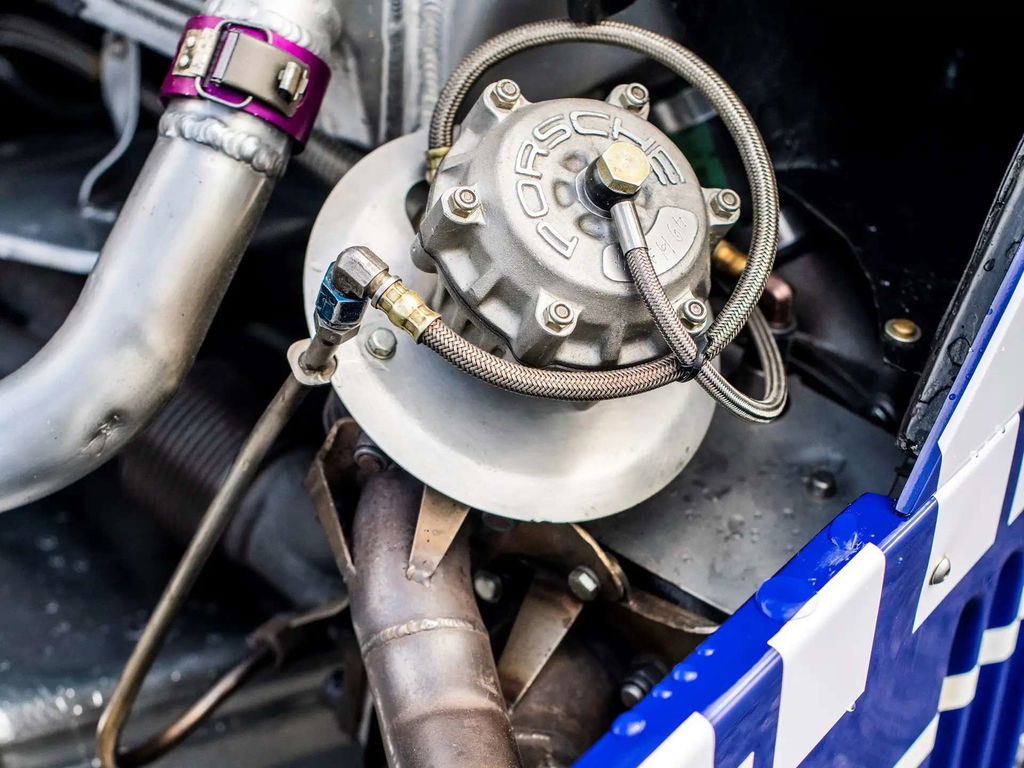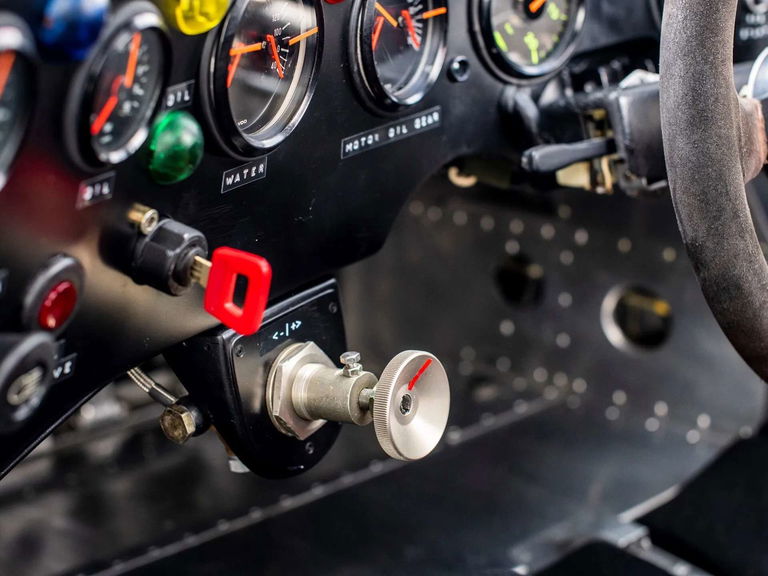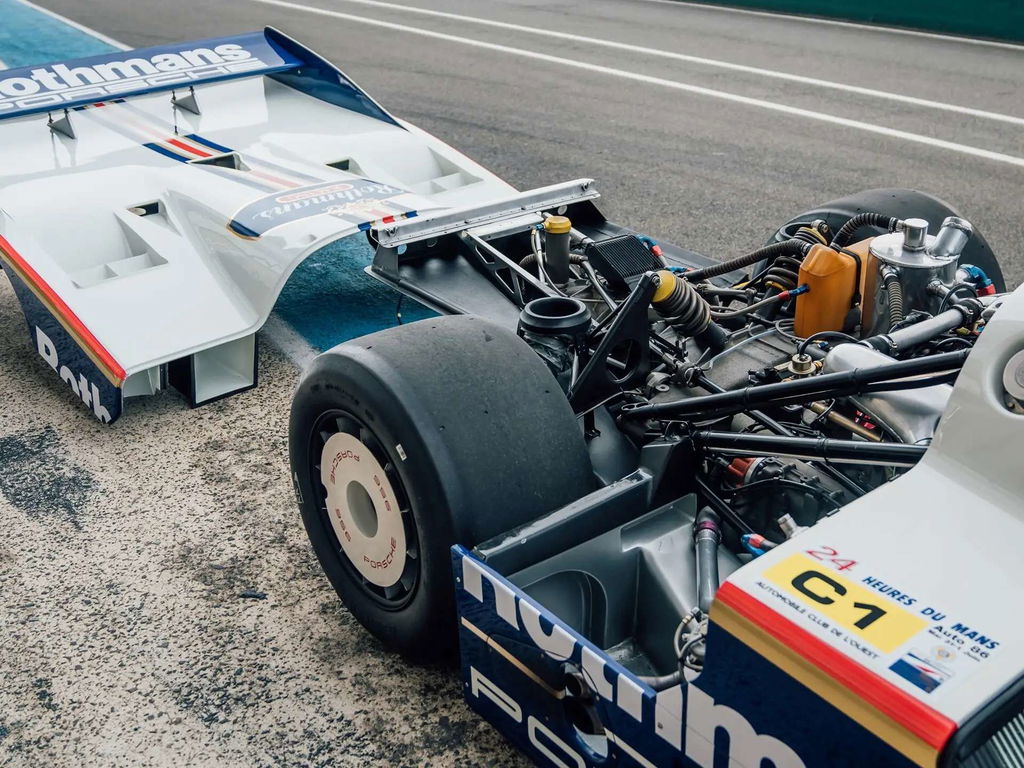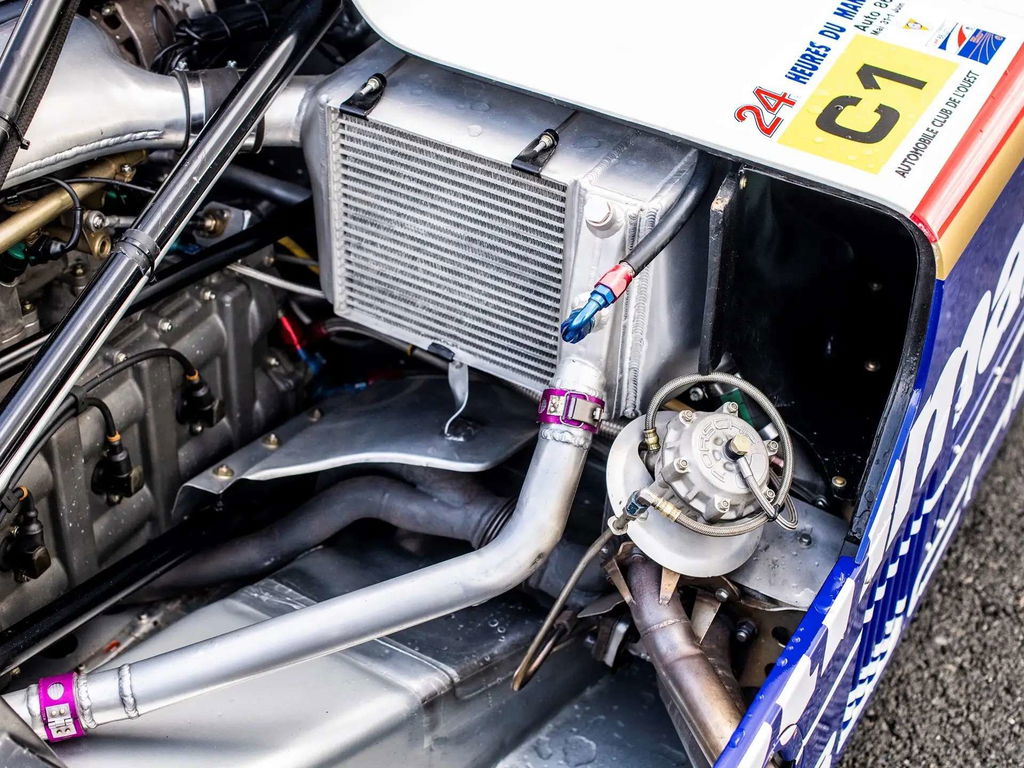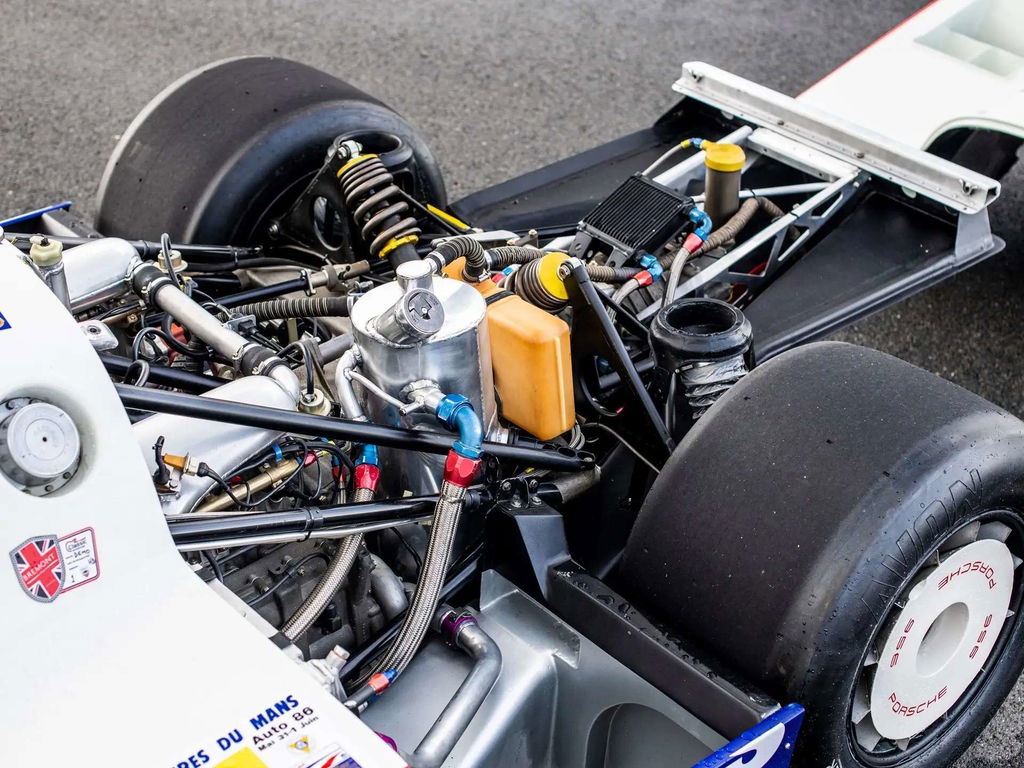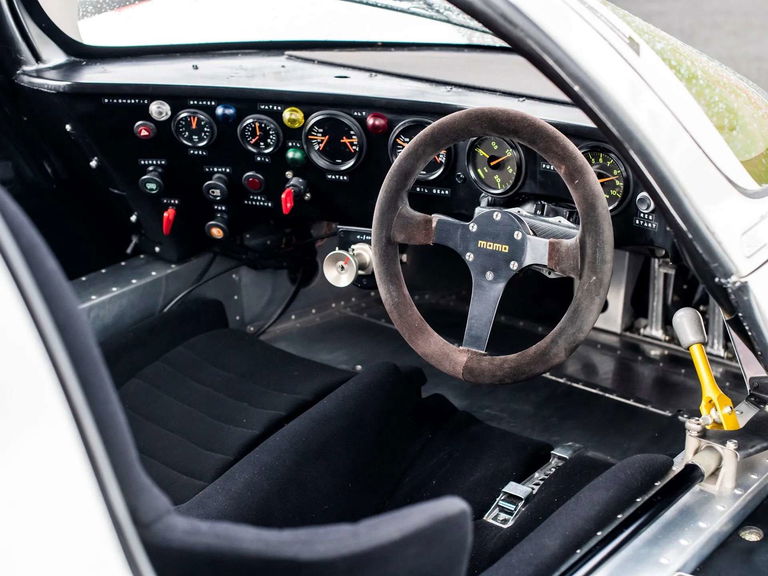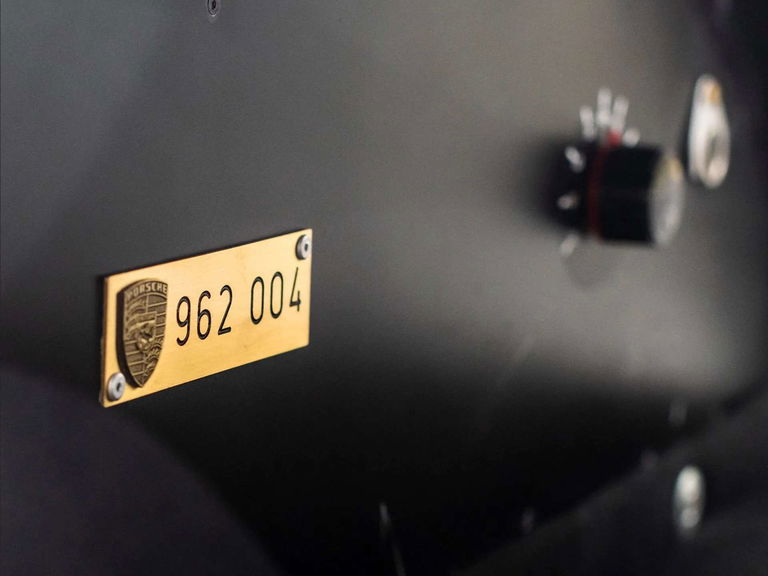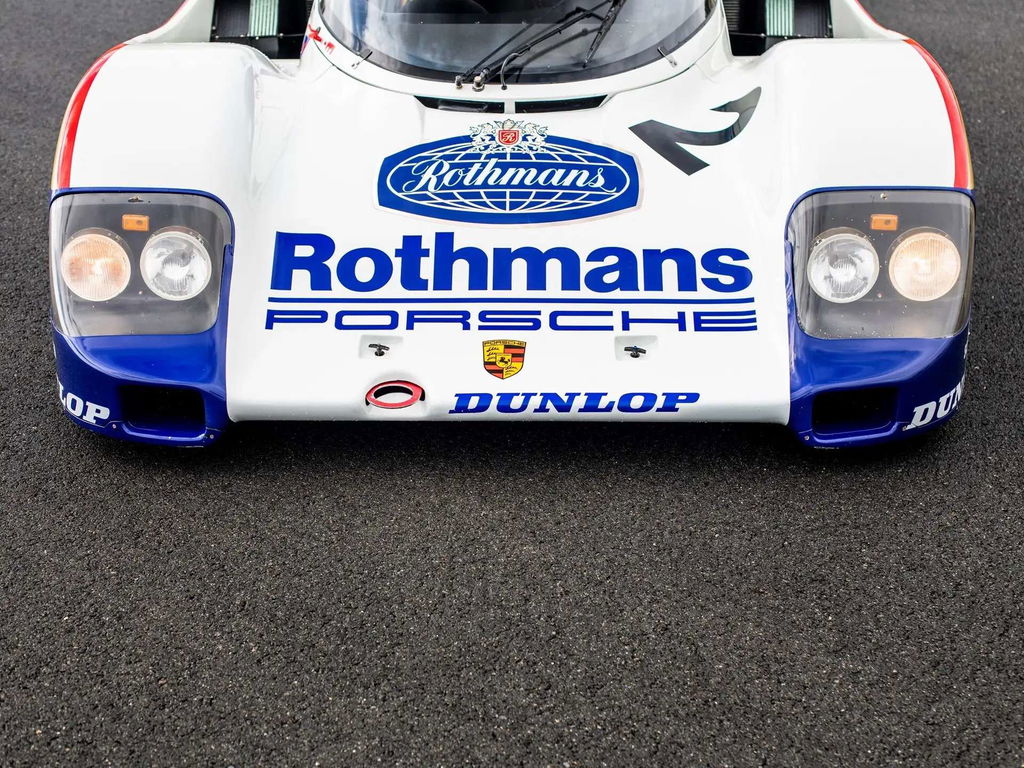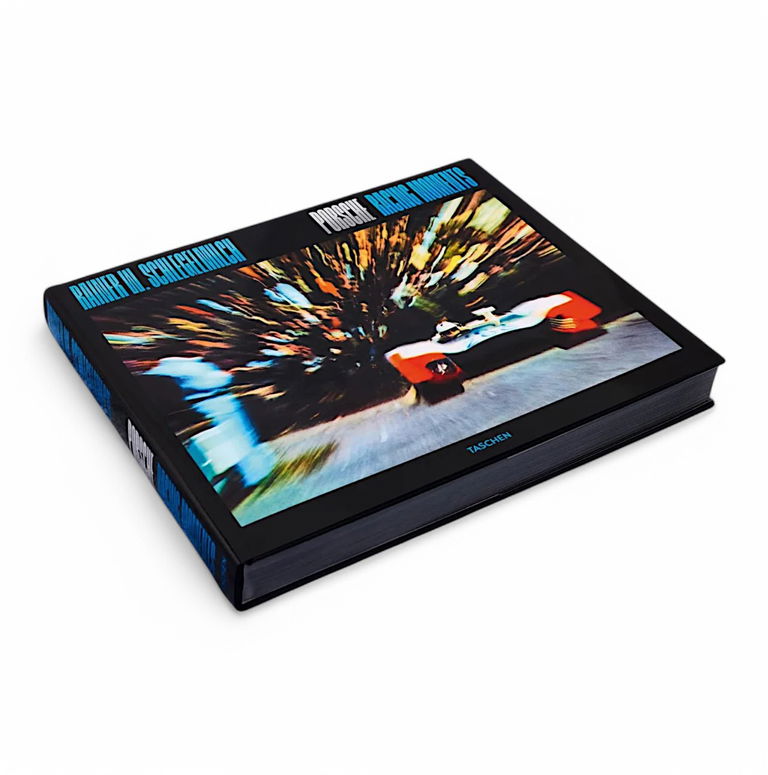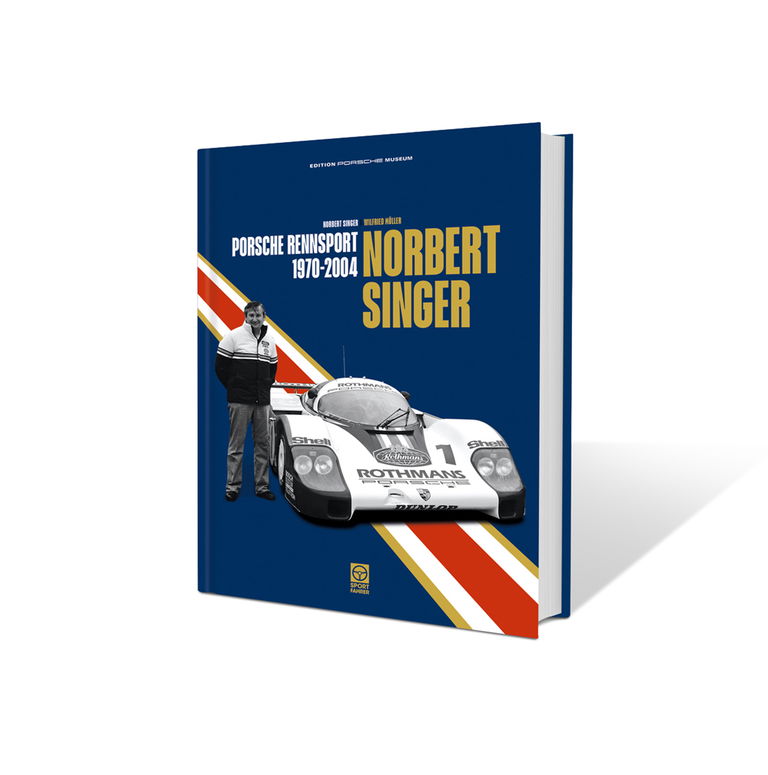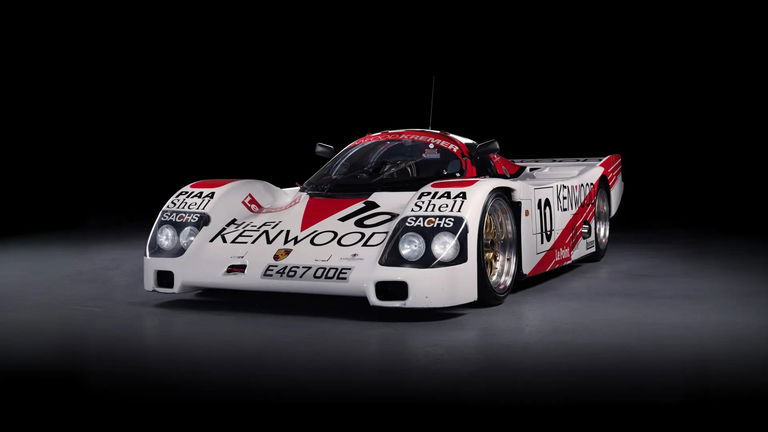Identification No. 962004 – Documents: Bill of Sale Only
Please note this lot has entered the EU on a temporary import bond, which must be cancelled either by exporting the lot outside of the EU on an approved Bill of Lading with supporting customs documentation or by paying the applicable VAT and import duties to have the lot remain in the EU
No manufacturer is more closely linked to the greatest 24 Hour race than Porsche, with an incredible record of 19 overall victories to date. Prior to the Group C sportscar era, Porsche had achieved six overall wins, which was still three behind Ferrari. Masterminded by Porsche’s legendary motorsport chief, Norbert Singer, the company’s Group C programme—headlined by the 956 and 962—would become the most successful in its history, and take its tally to 13 wins by 1994.
The 956 was a radical new design for Porsche. The firm had previously relied on a tubular or spaceframe chassis for its prototype sportscars, but the 956 was the first model to feature an aluminium monocoque. The engine was a twin-turbocharged 2.65-litre six-cylinder, which had already won Le Mans with the 936/81. One of the biggest advancements for the 956 was its aerodynamics, with ground-effect being harnessed to generate a huge amount of downforce. Cleverly, the 956 featured two bodywork setups: the long-tail for Le Mans, and a short-tail “Sprint” set up for regular circuits. This adaptability allowed the 956 and 962 to win five consecutive World Sportscar Championships (WSC), something never achieved before or since by one programme.
IMSA regulation changes forced the 956 to subtly evolve into the 962. The wheelbase was increased slightly to allow the pedals to move behind the front axle centre line, and a steel roll cage was integrated into the chassis. Mechanically, the WSC Works-entered Group C 962s remained very similar to their 956 predecessors.
This 962C, chassis number 004, is one of three Works 962s assigned to the Rothmans Porsche factory team for the 1985 and 1986 seasons. Making its debut at the 1985 24 Hours of Le Mans, it was emblazoned in the iconic Rothmans livery. Piloted by John Watson, Vern Schuppan, and Al Holbert, it qualified 5th behind the other factory 962s, which were both fitted with 3-litre engines for qualifying. During the race it established its status as the lead Works car as it maintained 2nd place behind the Joest 956 for over 12 hours, before a crankshaft failure spelled the end of its race after 21 hours of racing.
Following its debut, chassis 004 was pressed into action as Jacky Ickx and Jochen Mass’ regular steed “No. 1” in the 1985 WSC, starting from the pole for the 1000 Kilometres rounds at Hockenheim, finishing 2nd at Mosport, and with a retirement at Spa-Francorchamps. With the retirement of Jacky Ickx from regular duties for the 1986 WSC season, Bob Wollek joined Jochen Mass for an assault on the championship, with chassis number 004 now sporting “No. 2”. The campaign began at Monza and continued at Silverstone before moving on to Le Mans.
Mass and Wollek were joined by Vern Schuppan for the 1986 24 Hour race. Mass reinforced his stellar reputation by grabbing pole with 0.61 seconds in hand over the eventually victorious sister car of Bell, Stuck and Holbert. During the race the trio battled for the lead before settling in for an almost certain 3rd place. Unfortunately, a mistimed arrival at an oil spill at 3:04 am caused Mass to leave the track and resulting in retirement. Its final Works Rothmans Porsche outing was at the 1000 Kilometres of Nürburgring.
Chassis 004 was then sold to legendary privateer team, Joest Racing, in April 1987. During this time, the team was factory supported and took over the Rothmans sponsorship. The 962C made its debut with Joest at the 1987 1000 Kilometres of Nürburgring. Driven by former factory drivers, Derek Bell and Hans-Joachim Stuck, it scored a fine 2nd-place finish.
The car would feature successfully in more WSC rounds and Supercup races, but its final bow at Le Mans would be at the 1988 edition of the 24 Hour race, dressed in Blaupunkt colours. Driven by David Hobbs, Didier Theys, and Franz Konrad, it ran a textbook race with no troubles and finished a creditable 5th overall and ahead of the second factory Shell Dunlop 962.
Chassis 004 was sold to a collector in the USA at the end of the 1988 season. Of its two sister cars, chassis 002 also sold in 1989 to a prominent Porsche collector in the United States, with the current owner acquiring the car from him in 2004. Chassis 003 was sold to the current US-based owner in 1993, so it is fair to state that the opportunity to acquire such a car presents itself incredibly rarely. Chassis 004 has been the star of a major Group C collection since 2007.
This Porsche was specifically singled out by Valentino Rossi to drive at the 2017 Goodwood Festival of Speed while in 2022 it was demonstrated at both Goodwood and the Silverstone Classic, being reunited with Derek Bell and John Watson. In 2018, a restoration by marque expert, Trevor Crisp, of Katana Ltd. was completed.
Statistically, Porsche’s Group C programme with the 956 and 962 is the most successful in endurance racing history, and it established the marque as the dominant force at Le Mans. The sale of chassis 004 represents the first time that one of the factory Rothmans Porsche 962Cs has been offered publicly, and presents an unmissable opportunity to acquire not only a factory Porsche prototype, but one with a remarkable history as a 24 Hours of Le Mans pole-sitter, and a driver roster that counts among its number many of Porsche’s legendary factory drivers.


